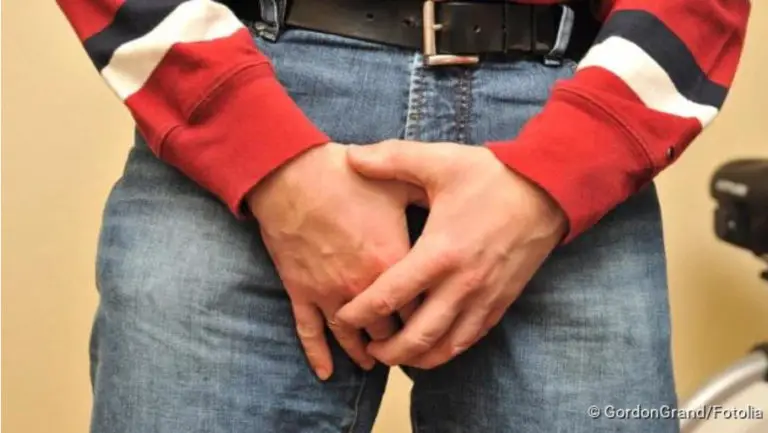Broken toe: signs, first aid, healing time
Broken toe: signs, first aid, healing time
Do you have a big blue toe after you hit a ledge with it? Maybe the toe is broken. Symptoms such as swelling and bluish discoloration indicate such a toe fracture – especially if the damaged toe can no longer be moved properly. To learn more about suspicious symptoms and what you can do about a broken toe, click here.

Brief overview
- What to do if your toe is broken? Cooling, immobilisation, elevation, if necessary to relieve pain
- Fractured toe – risks: including comminuted fracture, compartment syndrome, soft tissue damage, nail bed injury
- When to see a doctor? Always have a (supposedly) broken toe examined by a doctor to prevent any permanent damage (such as malpositioning).
Heads up!
- A broken little toe can often be recognized by the clear malpositioning.
- Cooling can be beneficial not only immediately after the accident, but also in the days after the toe break.
- If you have to walk despite a broken toe, wear comfortable shoes with a firm sole. If possible, do not move or strain the affected toe.
- Diabetes patients often suffer from sensory disturbances in the foot and therefore often notice a broken toe only late. The resulting delay in the start of treatment can delay healing.
Broken toe: How to recognize?
No matter if the big toe or the little toe is broken – the symptoms are the same. The good thing is that a broken toe shows symptoms that even laymen can easily recognize. For example, a broken toe is indicated by signs such as
- Misalignment
- intense pain
- restricted mobility
- Swelling
- bluish to black discoloration under the nail or on the whole toe due to bruising (sometimes)
If the big toe is broken, the symptoms are the same as for the other toes. However, this is the most problematic form of toe fracture, as the big toe carries the most weight.
Broken toe: What to do?
It happened – the toe is broken. What you can do to help yourself or, as a first responder, someone else is
- Cooling: Wrap an ice pack or cool pack in a cloth and hold it gently on the broken toe. This can relieve pain and swelling.
- Immobilize: Move the broken toe as little as possible and do not put any weight on it (i.e. do not step on it and walk).
- Elevation: To counteract the swelling, elevate the foot with the broken toe, if possible above heart level.
- Reduce pain: For great pain, over-the-counter painkillers from the group of NSAIDs such as ibuprofen or diclofenac can help. Less suitable is ASS (acetylsalicylic acid) because of its blood-thinning effect.
Broken toe: risks
For example, if you accidentally bump against the bedpost or a table leg while walking, or a heavy object falls on your toes, often not only a toe is broken. Sometimes the injury turns out to be worse:
- Crushed bone: If a heavy object falls on the foot, several toes are often broken. So-called debris zones can also occur here, so the bone does not break in two, but in many small pieces.
- Soft tissue damage: In more serious accidents (e.g. motorcycle accident), toe fractures can be accompanied by significant soft tissue injuries (muscles, tendons, ligaments etc.). Often the entire forefoot is then affected.
- Nail bed injury: Often the nail bed is also injured in a toe fracture. It must then also be treated, otherwise the nail can splice out. A deformation of the nail and chronic infection are then possible consequences. A displaced nail must be removed and, if necessary, sutured or splinted with either the original nail or an artificial nail.
- Bruise: In the case of a painful bruise under the toenail, two small holes are drilled into the nail to make it easier for the blood to drain away. The nail bed must not be injured.
- Compartment syndrome: In compartment syndrome, the tissue pressure increases due to swelling and bruising in a muscle lobe (=group of muscles enclosed by a barely stretchable fascia). This can cause nerves and vessels inside the box to be squeezed and thus cause the tissue to die.
A compartment syndrome is a medical emergency that needs to be operated on as soon as possible!
Broken toe: When to see a doctor?
If you suspect a broken toe, you should always consult a doctor. The responsible specialist is a doctor for orthopaedics and accident surgery.
Broken toe: examinations by a doctor
In order to clarify whether the toe is broken or sprained, the doctor will first ask you as the first aider or the person affected about the circumstances of the accident and the medical history (anamnesis). Possible questions of the doctor in this conversation could be:
- How did the accident occur?
- What complaints do you have (pain, limited mobility of the foot etc.)?
- Were there any complaints such as pain and restricted movement in the foot area even before the accident?
The doctor will then examine the toe. An open fracture is easy to detect: Bone fragments are visible through an open skin area. A closed toe fracture is present if the soft tissue layers above the fracture are not injured. Sometimes the fragments of the broken toe are displaced (dislocated) and/or bone rubbing is heard when the toe is moved carefully.
An X-ray examination is necessary for a clear diagnosis. Particularly in the case of small fractures, there is often a lack of reliable fracture signs. X-rays of the forefoot are taken in two planes.
Broken toe: treatment by the doctor
Usually a broken toe heals without great difficulty with appropriate treatment. However, in the absence of or inadequate therapy, healing may be delayed. In addition, consequential damage (such as permanent malpositioning) can occur.
Broken toe: Conservative treatment
A simple toe fracture is usually treated conservatively. The doctor will tape the broken toe: He will apply a plaster bandage – with a tile-like adhesive plaster bandage the broken toe is fixed with a neighbouring healthy toe (buddy taping).
In children, a broken toe usually only needs to be taped for about three weeks. Adults should wear the bandage for four to five weeks until the pain subsides. If the deformity is still maintained, surgery may be necessary.
The affected person may only apply painful pressure to the broken toe. If several toes are injured, the patient receives a plaster shoe (geisha shoe). The foot can no longer unroll and therefore cannot be fully loaded. Even if the big toe is not displaced, a plaster cast is often applied or special splints are used to ensure immobilization.
Broken toe: surgical treatment
In some cases a broken toe may need surgery. This is necessary, for example, in the case of a strongly displaced toe fracture, a toe fracture with joint involvement or an open fracture.
A broken big toe is fixed with screws or plates during a surgical procedure. If the fracture causes a step to form in the metatarsophalangeal joint of the big toe, this must also be corrected surgically so that the patient can roll the foot without pain again. Fractures of the remaining toes are fixed by the doctor with mini screws or wires.
Broken toe: healing time
In most cases a broken toe can be treated well. The healing time depends, among other things, on the type of fracture (smooth, shattered, etc.). It takes about five to six weeks on average until the bone has healed. The toe can then be fully loaded again and no longer hurts.
When treating a toe fracture surgically, the following applies: As with any operation, there are general risks such as wound healing disorders and infections. Insufficient bone healing is also possible. Such complications can prolong the healing time for a broken toe.



